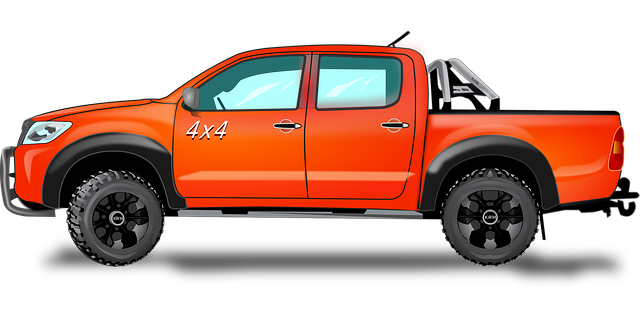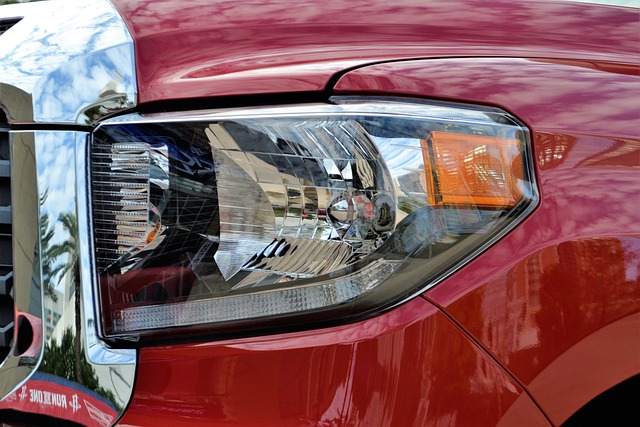Master cylinders, as explained by McCallen's 4×4 suspension specialists, are vital for vehicle braking systems. When you press the brake pedal, it triggers a hydraulic process that activates wheel brakes, slowing or stopping your vehicle. For off-road vehicles, understanding master cylinder basics is crucial for safety and performance on challenging terrain. The specialists emphasize regular maintenance and offer tips: compare hydraulic vs. pneumatic systems and tailor choices to vehicle type. Choosing the right master cylinder enhances braking power and safety.
Master cylinders are crucial components in a vehicle’s braking system, ensuring smooth and controlled stops. This article, crafted by McAllen’s 4×4 suspension specialists, delves into the fundamentals of master cylinders, exploring their definition, components, and importance. We compare differential vs. solid types, offering insights on selection based on 4×4 needs. Maintenance tips include regular inspections and addressing leaks promptly. Learn about upgrades that enhance performance and safety, with recommendations from our experts. Ensure optimal braking efficiency by understanding alignment and common signs of potential issues.
- Understanding Master Cylinders: The Basics
- – Definition and purpose
- – Components and how they work
- – Importance in vehicle braking systems
- Types of Master Cylinders: Which One's Right for You?
Understanding Master Cylinders: The Basics

Master cylinders are a fundamental component in vehicle braking systems, playing a crucial role in enabling drivers to control their vehicles’ speed and stop effectively. As tips from McCallen’s 4×4 suspension specialists highlight, understanding the basics of master cylinders is essential for optimal vehicle performance and safety.
These cylinders act as the central point of communication between the driver’s brake pedal and the vehicle’s braking mechanisms. When the driver presses the brake pedal, it creates pressure within the master cylinder, which then activates a series of events. This includes the release of hydraulic fluid under pressure to the wheel brakes, ultimately causing them to engage and slow down or stop the vehicle. The efficiency and responsiveness of this process are directly tied to the condition and performance of the master cylinder itself.
– Definition and purpose

The master cylinder is a vital component in automotive systems, particularly in vehicles designed for off-road adventures. As tips from McCallen’s 4×4 suspension specialists emphasize, this mechanical marvel serves as the control center for your vehicle’s braking system. By converting the force exerted on the brake pedal into hydraulic pressure, it enables precise and powerful stopping capabilities, crucial for navigating challenging terrain. Understanding its purpose is essential when modifying or maintaining a 4×4 vehicle, ensuring optimal performance during off-road excursions.
– Components and how they work

The master cylinder is a key component in any vehicle’s braking system. It serves as the primary lever for translating the force exerted by the driver’s foot on the brake pedal into hydraulic pressure, which is then channeled to the brakes at each wheel. This essential part is composed of several interconnected elements: the cylinder body, a piston, and a master reservoir. When the brake pedal is depressed, the piston within the cylinder moves, compressing fluid within the chamber. This pressurized fluid acts as a signal, traveling through the hydraulic lines to activate the slave cylinders located at each wheel, ultimately causing the brakes to engage. Tips from McAllen’s 4×4 suspension specialists emphasize the importance of regular maintenance for master cylinders to ensure optimal performance and safety during off-road adventures.
– Importance in vehicle braking systems

The master cylinder is a vital component in any vehicle’s braking system. It serves as the primary source of hydraulic pressure, enabling effective and safe slowing or stopping of the vehicle. Tips from McAllen’s 4×4 suspension specialists emphasize that understanding its functionality and maintaining it properly are crucial for optimal driving safety. When functioning correctly, this cylinder translates the force applied to the brake pedal into hydraulic pressure, which is then transmitted to the wheels, allowing for precise control over deceleration. Any malfunction or failure in this component can lead to decreased braking performance, increasing the risk of accidents; thus, regular inspection and timely replacement are essential components of vehicle maintenance.
Types of Master Cylinders: Which One's Right for You?

When choosing a master cylinder, understanding the different types available is key. At McCallen’s 4×4 suspension specialists, we’ve seen countless off-road adventures benefit from the right fit.
The first distinction lies between hydraulic and pneumatic master cylinders. Hydraulic systems, common in most vehicles, use fluid pressure to transmit braking force, offering consistent performance under various conditions. Pneumatic alternatives, found in some specialized 4x4s, utilize compressed air, which can provide quicker response times and reduced internal friction, ideal for demanding terrain. Next, consider the type of vehicle you’re fitting. Light off-road vehicles may excel with lighter master cylinders designed for precision control, while heavy-duty trucks demand robust, high-flow models capable of handling increased braking demands.
Master cylinders are an essential component of your vehicle’s braking system. By understanding their function and choosing the right type for your needs, you can ensure safe and reliable stopping power. For tailored advice, consult the tips from McCallen’s 4×4 suspension specialists, who can guide you in making an informed decision based on your specific driving requirements.



